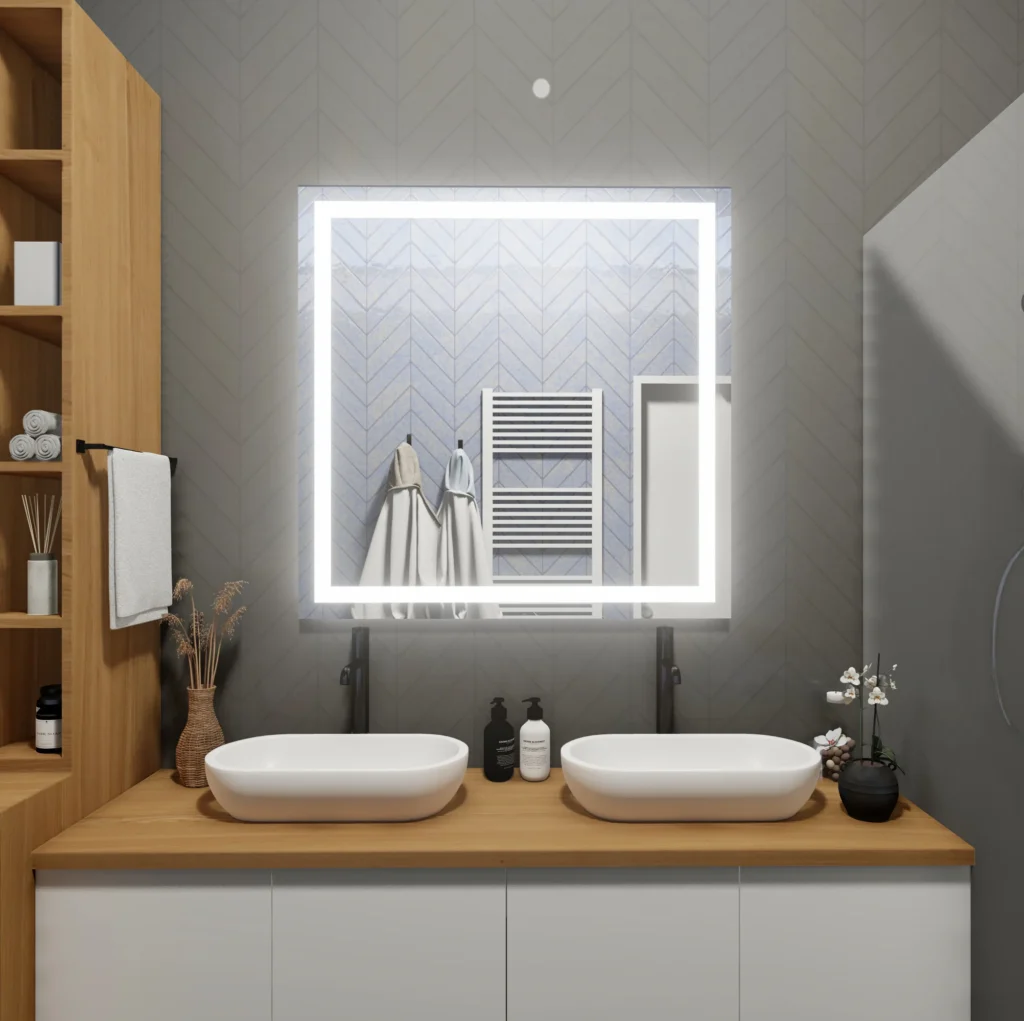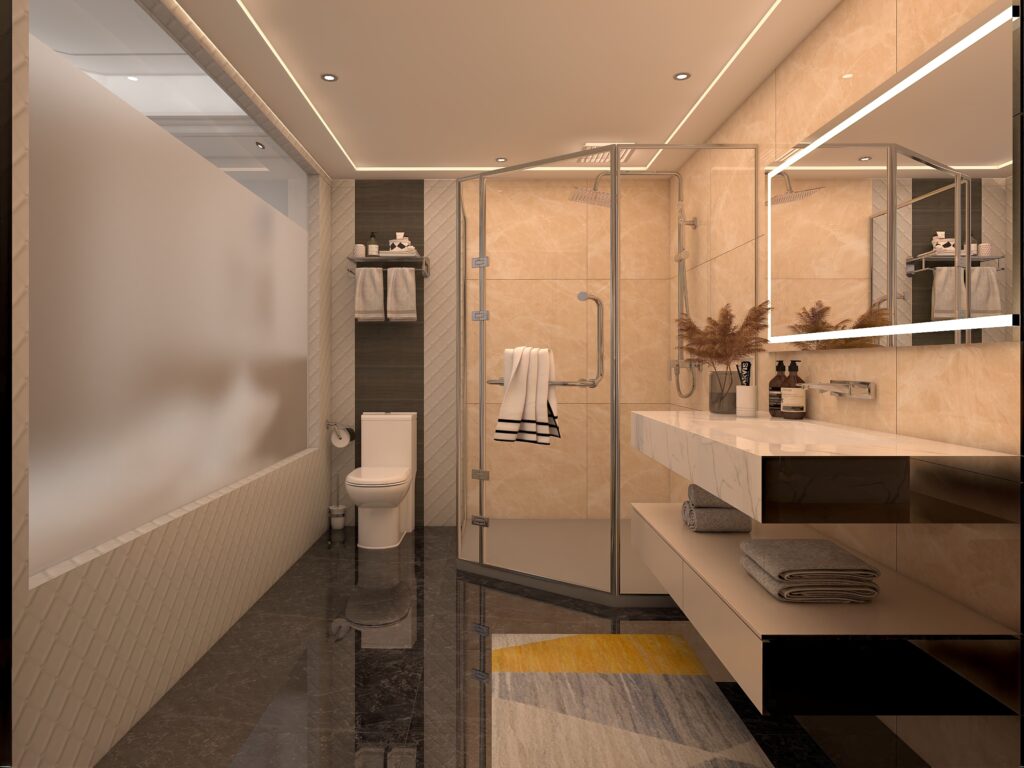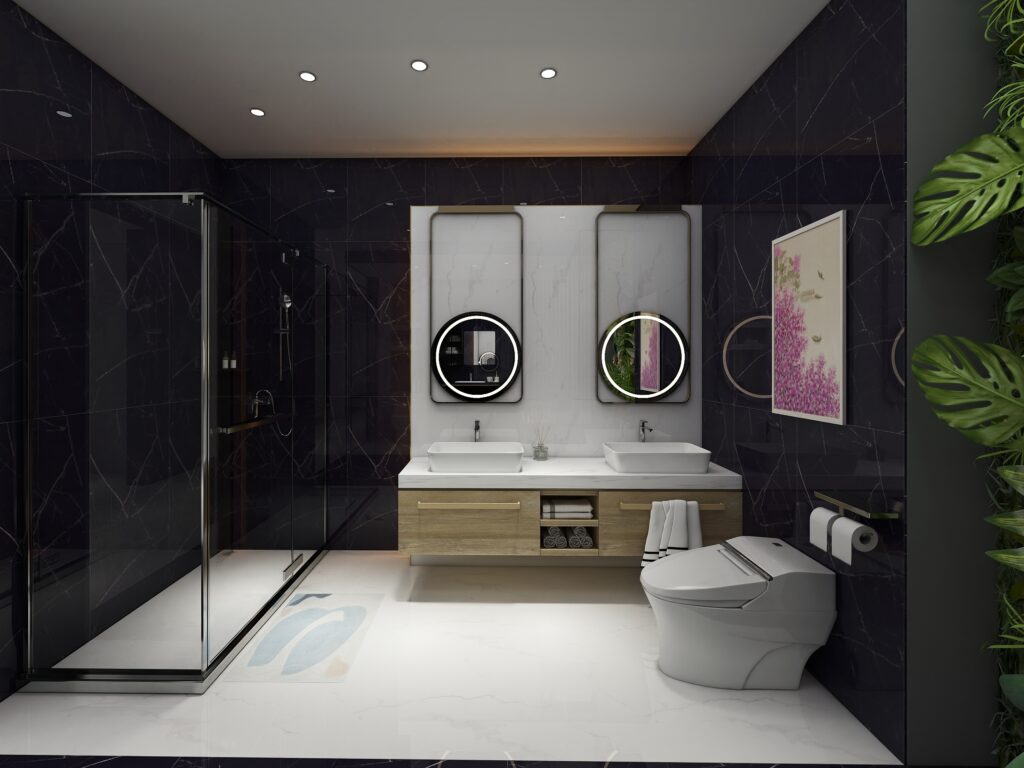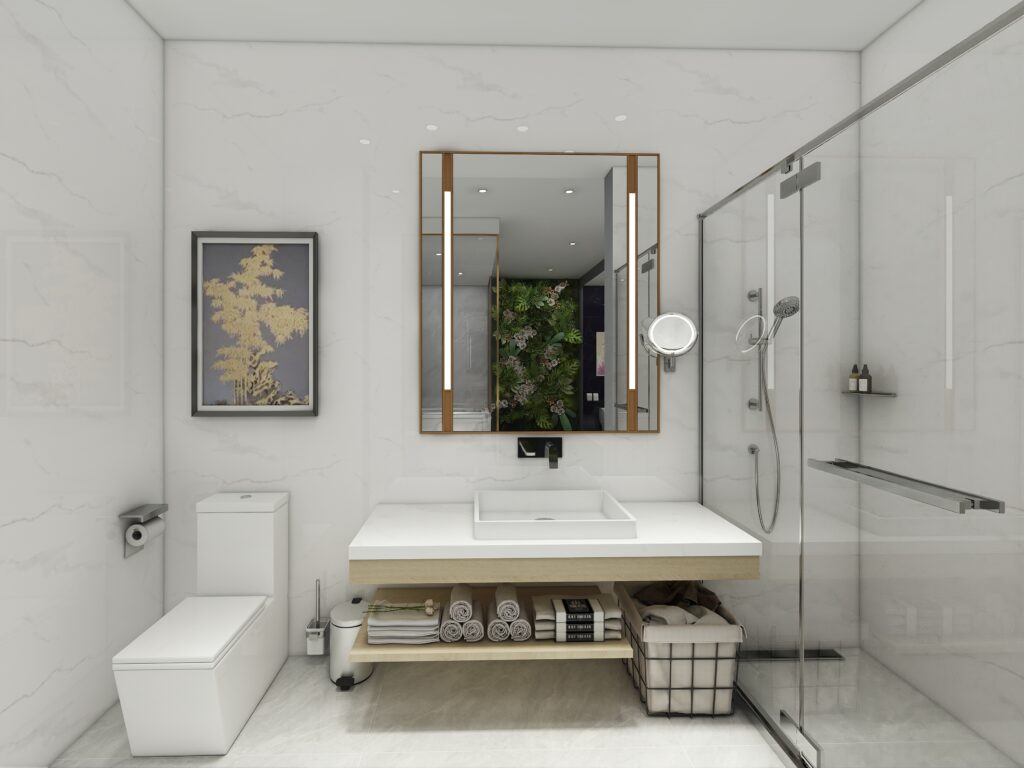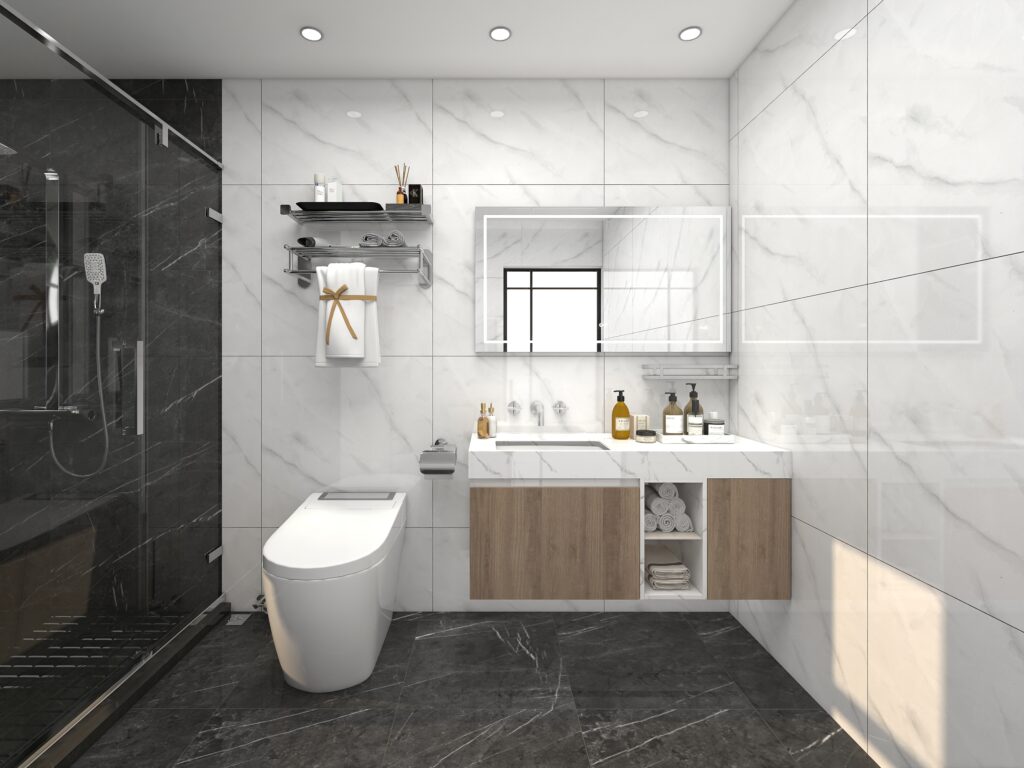As we step into 2025, the global bathroom industry is undergoing a transformative shift, driven by technological innovation, sustainability imperatives, and evolving consumer demands across regions. This article explores key trends shaping the sector and presents tailored solutions for international markets, with a focus on North America, Europe, Southeast Asia, and beyond.
1. Key Trends Reshaping Global Bathroom Markets
a. Smart Technology Integration
The rise of smart bathroom ecosystems is revolutionizing daily routines worldwide. IoT-enabled devices, such as touchless faucets, voice-controlled showers, and AI-powered toilets with health monitoring capabilities, are gaining traction in North America and Europe . Brands like KOHLER and Hansgrohe are leading the charge, with smart toilet penetration expected to grow significantly in these regions. In China, companies like JOMOO are leveraging their R&D strengths to export smart solutions to Southeast Asia, where urbanization drives demand for modern amenities .
b. Sustainability and Eco-Friendly Practices
Environmental responsibility is a global priority. Consumers in Europe and North America increasingly demand products made from recycled materials and water-saving fixtures (e.g., low-flow toilets with WaterSense certification) . For instance, the U.S. EPA’s updated WaterSense standard (2025) mandates maximum flush volumes of 1.28 gallons for toilets, pushing manufacturers to innovate . Meanwhile, Southeast Asian markets like Indonesia and Vietnam are adopting eco-friendly solutions due to government infrastructure investments and rising environmental awareness .
c. Wellness-Centric Design
Bathrooms are evolving into personal sanctuaries, particularly in high-income markets. Spa-like features—such as steam showers, heated floors, and aromatherapy systems—are popular in North America and Europe, aligning with post-pandemic wellness trends . In contrast, Southeast Asian consumers prioritize affordable luxury, with freestanding bathtubs and ergonomic shower areas gaining popularity in mid-tier residential projects .
d. Customization and Modular Solutions
Consumers globally seek bespoke bathroom experiences. Modular designs and customizable finishes (e.g., matte black faucets, marble vanities) cater to individual aesthetics in Europe and North America . For cost-sensitive markets like India and Southeast Asia, space-optimized modular solutions—such as foldable shower benches and wall-mounted vanities—address urban living challenges . Brands like TOTO and Duravit are expanding their ODM/OEM services to meet demand from hotels and commercial projects worldwide .
e. Regional Market Dynamics
- North America: Dominated by premium smart products, with offline retail channels (e.g., Home Depot) remaining critical for distribution .
- Europe: Focus on sustainability and energy efficiency, with brands like GROHE leading in water-saving technologies .
- Southeast Asia: Fast-growing market driven by infrastructure projects and rising middle-class demand, where Chinese brands like ARROW compete with local players through affordability and quality .
2. Tailored Solutions for Global Markets
a. Smart Bathroom Ecosystems
- North America & Europe: Integrate voice-controlled showers (e.g., KOHLER Konnect) and smart mirrors with AR skincare analysis.
- Southeast Asia: Introduce affordable smart faucets with touchless sensors for hotels and residential complexes .
- Certifications: Ensure compliance with WaterSense (North America), CE (Europe), and WaterMark (Australia) to enter regulated markets .
b. Sustainable Design Frameworks
- Material Innovation: Use recycled stainless steel (Europe) and reclaimed teak wood (Southeast Asia) for vanities.
- Water Efficiency: Promote aerated faucets (flow rate ≤1.5 GPM) and dual-flush toilets compliant with regional standards .
- Carbon Neutrality: Partner with suppliers like EcoBath to adopt low-VOC paints and carbon-neutral packaging .
c. Wellness-Driven Layouts
- High-End Markets: Install chromotherapy steam rooms and ergonomic bathtubs with hydrotherapy functions.
- Emerging Markets: Prioritize anti-slip flooring and grab bars for accessibility, aligning with aging population needs .
d. Modular and Space-Optimized Solutions
- Urban Europe: Offer wall-mounted vanities with hidden storage for compact apartments.
- Southeast Asia: Develop multi-functional shower systems combining rainfall heads and handheld sprays for cost-effective renovations .
e. Regionalized Distribution Strategies
- North America: Partner with Home Depot and Lowe’s for offline reach, while leveraging Amazon for online sales .
- Europe: Collaborate with B&Q and local designers to penetrate mid-to-high-end markets.
- Southeast Asia: Use TikTok Shop to showcase affordable “bathroom hacks” and partner with regional distributors like SCG (Thailand) .
3. Strategic Insights for Global Expansion
- Localized Marketing:
- In Europe, emphasize EU Ecolabel certifications and circular economy practices.
- In Southeast Asia, leverage TikTok influencers to promote “small-space solutions” .
- Policy Compliance:
- Adopt RoHS (Europe) and NSF 61 (North America) standards for materials safety .
- Capitalize on Southeast Asian government incentives for eco-friendly products, such as Indonesia’s infrastructure subsidies .
- Partnerships:
- Collaborate with international designers (e.g., Philippe Starck) for premium lines targeting Europe.
- Join trade fairs like ISH Frankfurt and KBIS (North America) to connect with global buyers .
Conclusion
The global bathroom industry is at a pivotal juncture, where technology, sustainability, and regional preferences converge. By tailoring solutions to market-specific needs—such as smart innovations for North America, eco-friendly designs for Europe, and affordable modular systems for Southeast Asia—brands can unlock growth opportunities. Agility, compliance with international standards, and strategic partnerships will be critical to success in 2025 and beyond.
Explore our curated collection of premium faucets, showers, and smart fixtures at [Your Global Brand URL], designed to meet the highest standards of quality and innovation across continents.
Key Takeaways:
- Regional Focus: Adapt product designs and marketing strategies to North America’s tech-savvy consumers, Europe’s sustainability ethos, and Southeast Asia’s affordability demands.
- Certifications: Prioritize international compliance (WaterSense, CE) to build trust in regulated markets.
- Digital Presence: Utilize TikTok and Instagram to engage younger demographics in emerging markets.
- Local Partnerships: Collaborate with regional distributors and influencers to accelerate market penetration.
This article synthesizes industry data from to provide a forward-looking analysis of the global bathroom industry’s trajectory.
